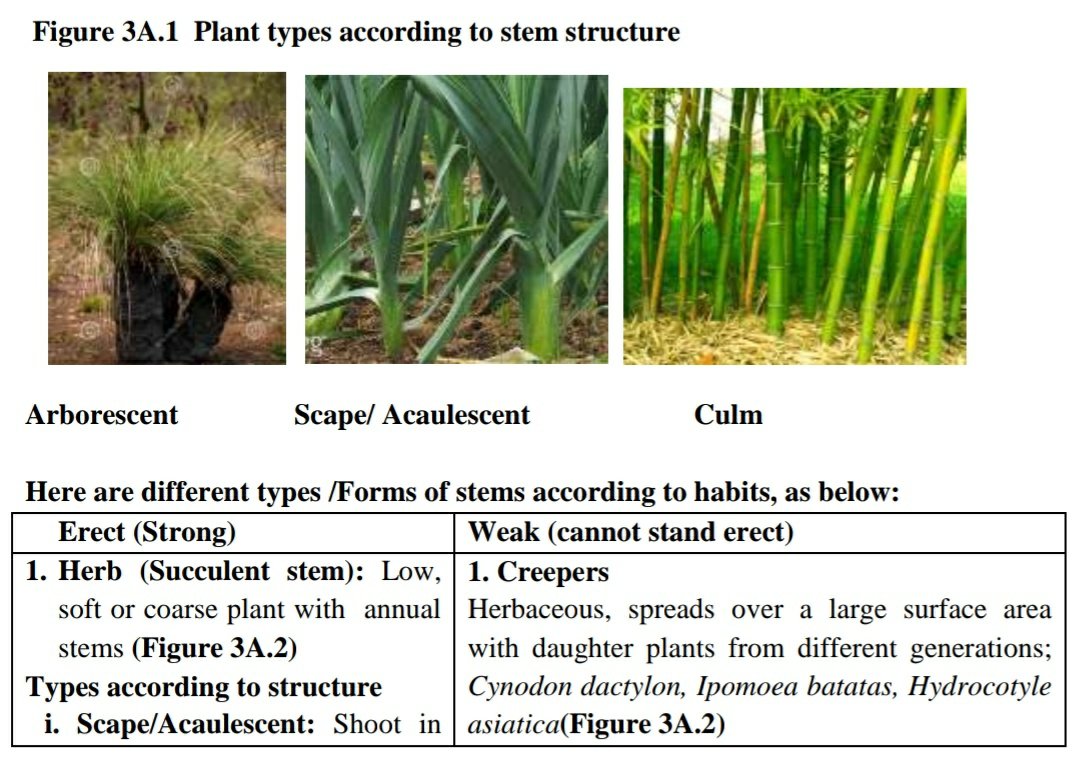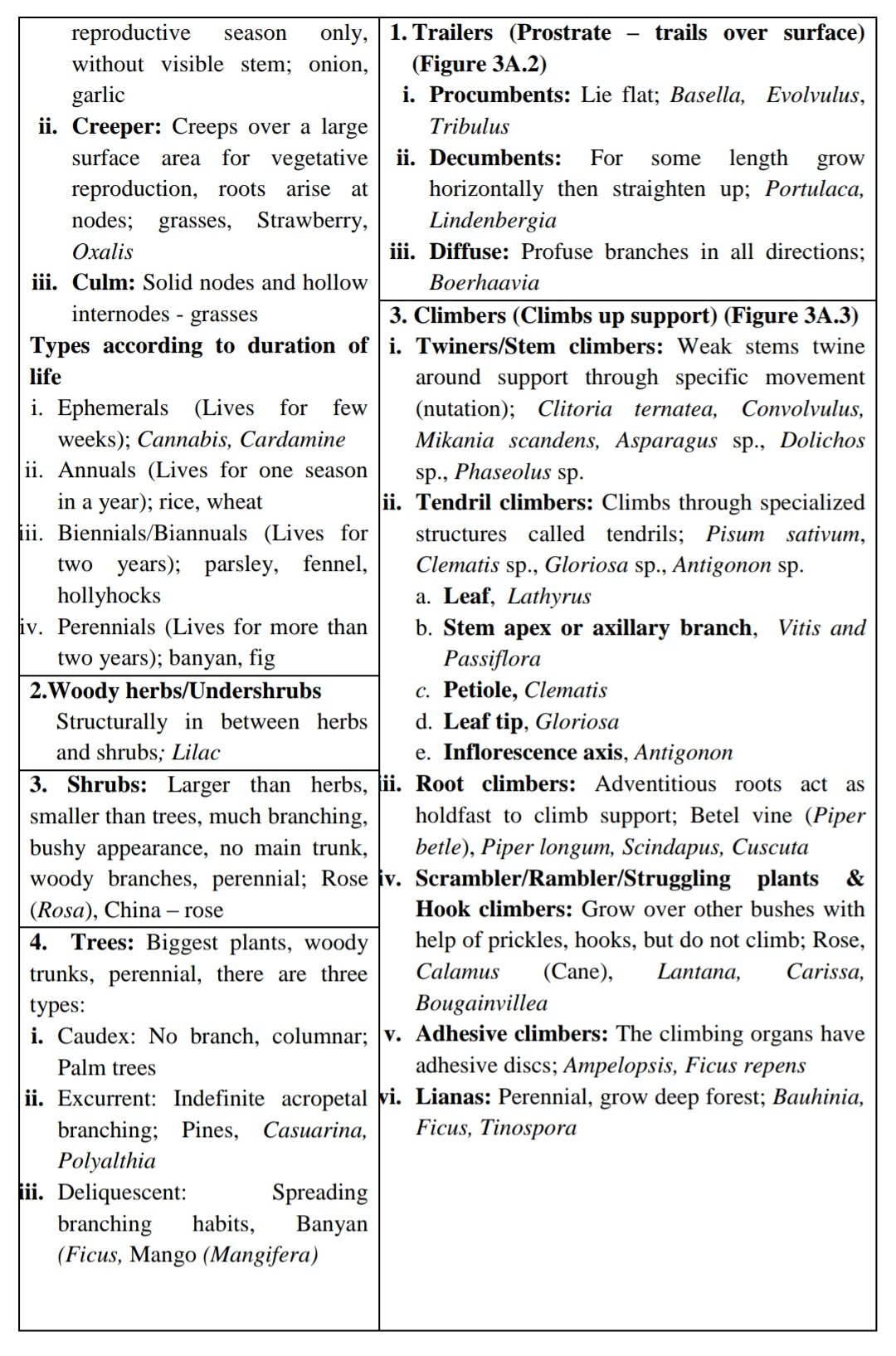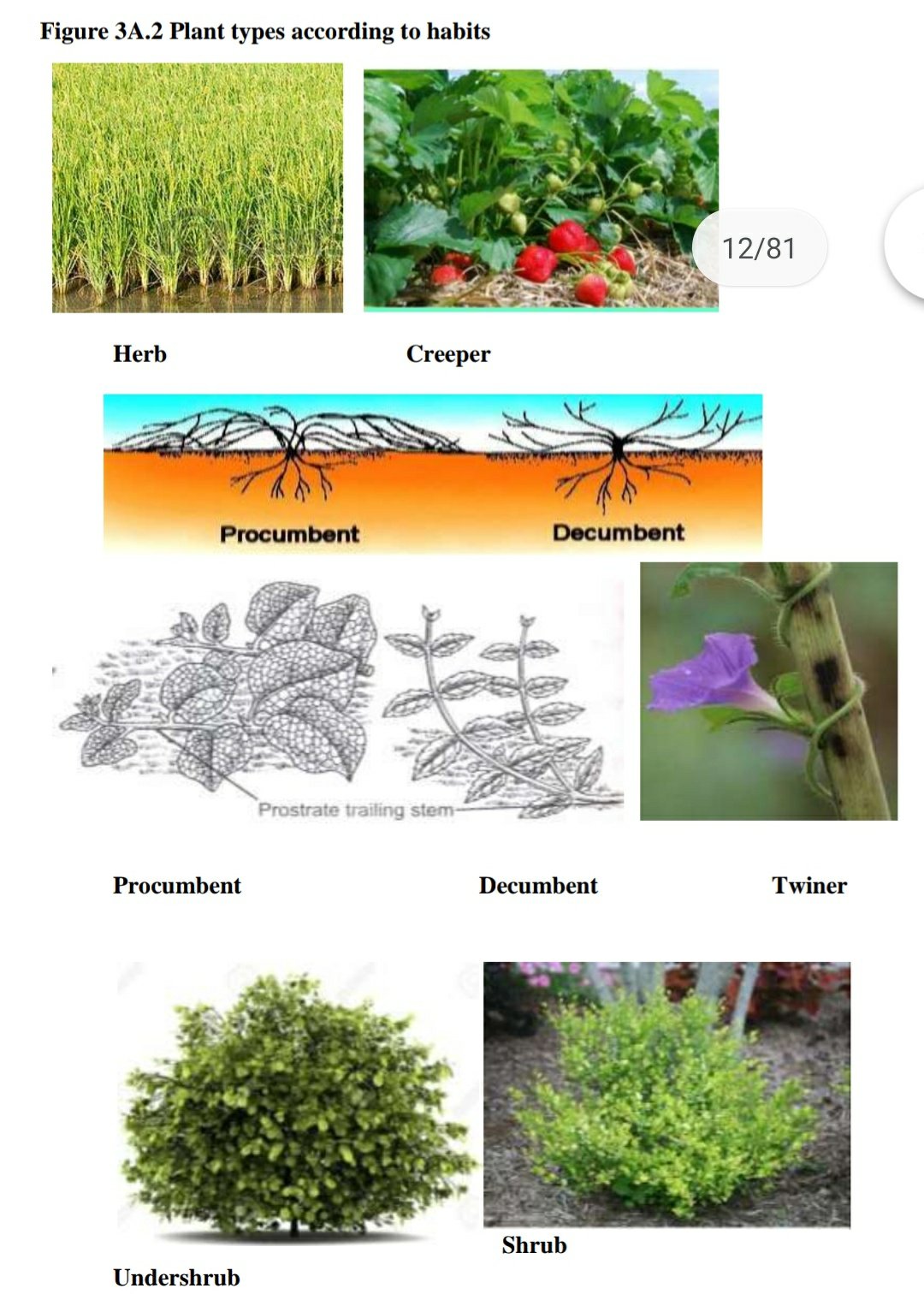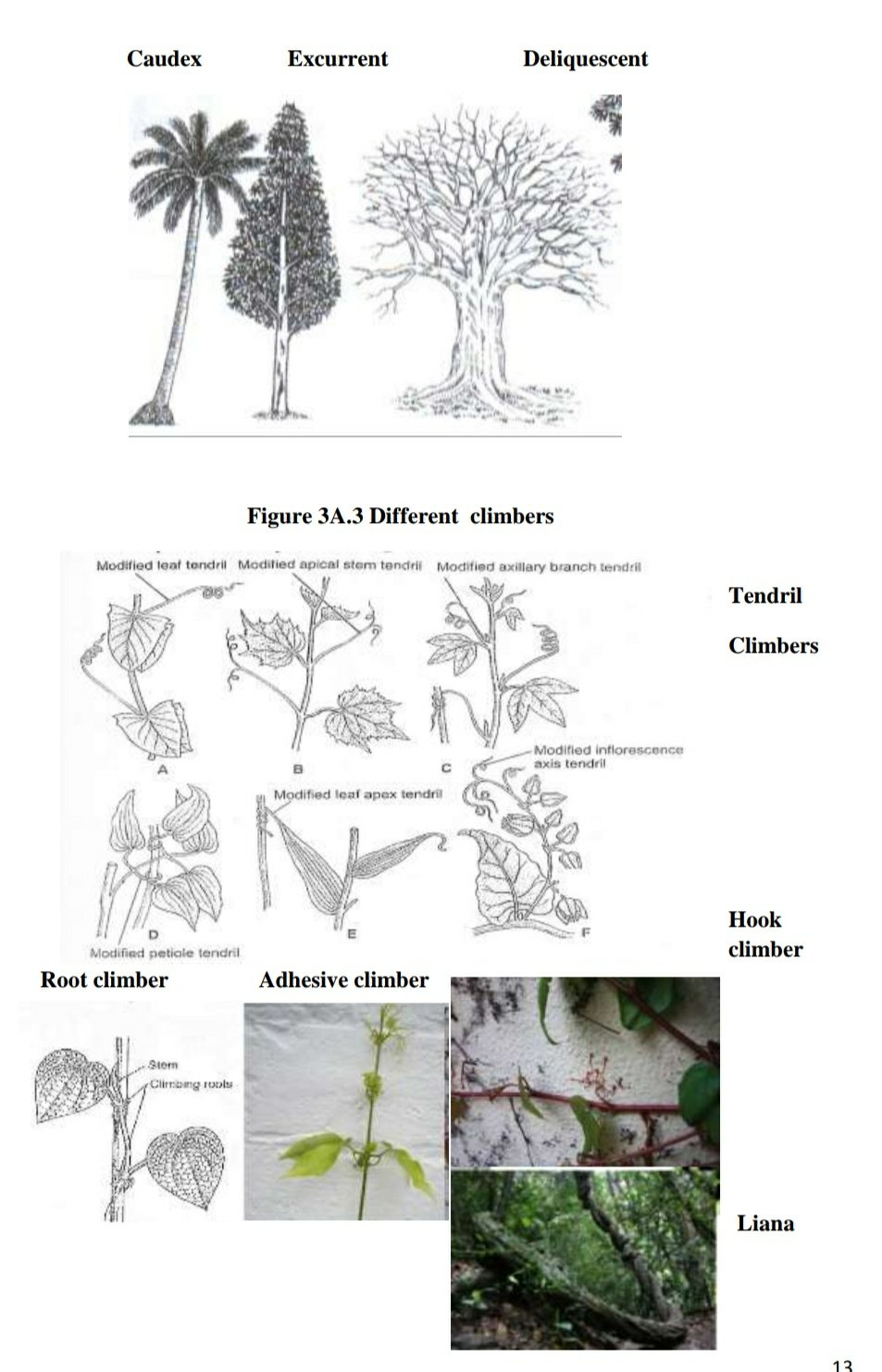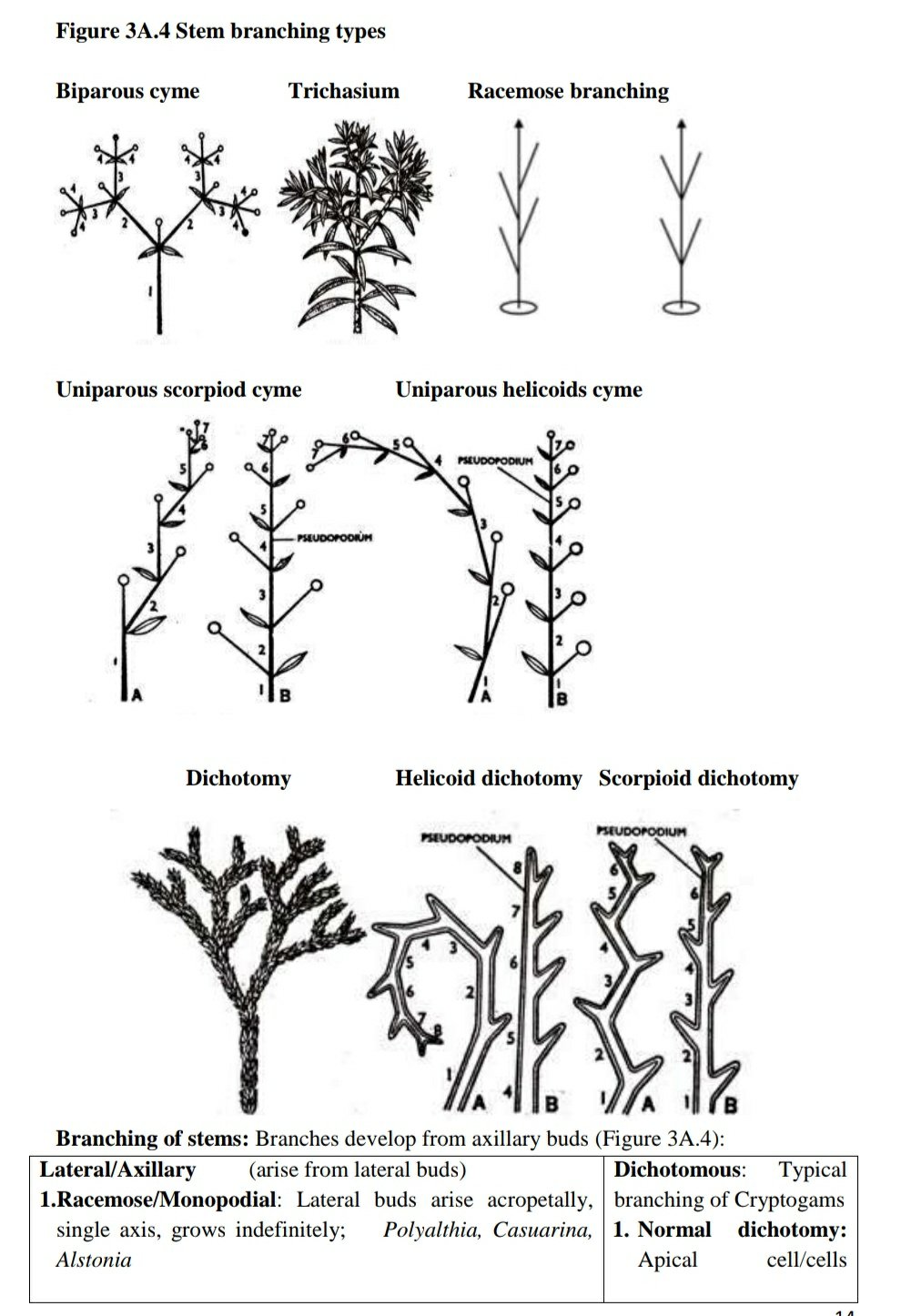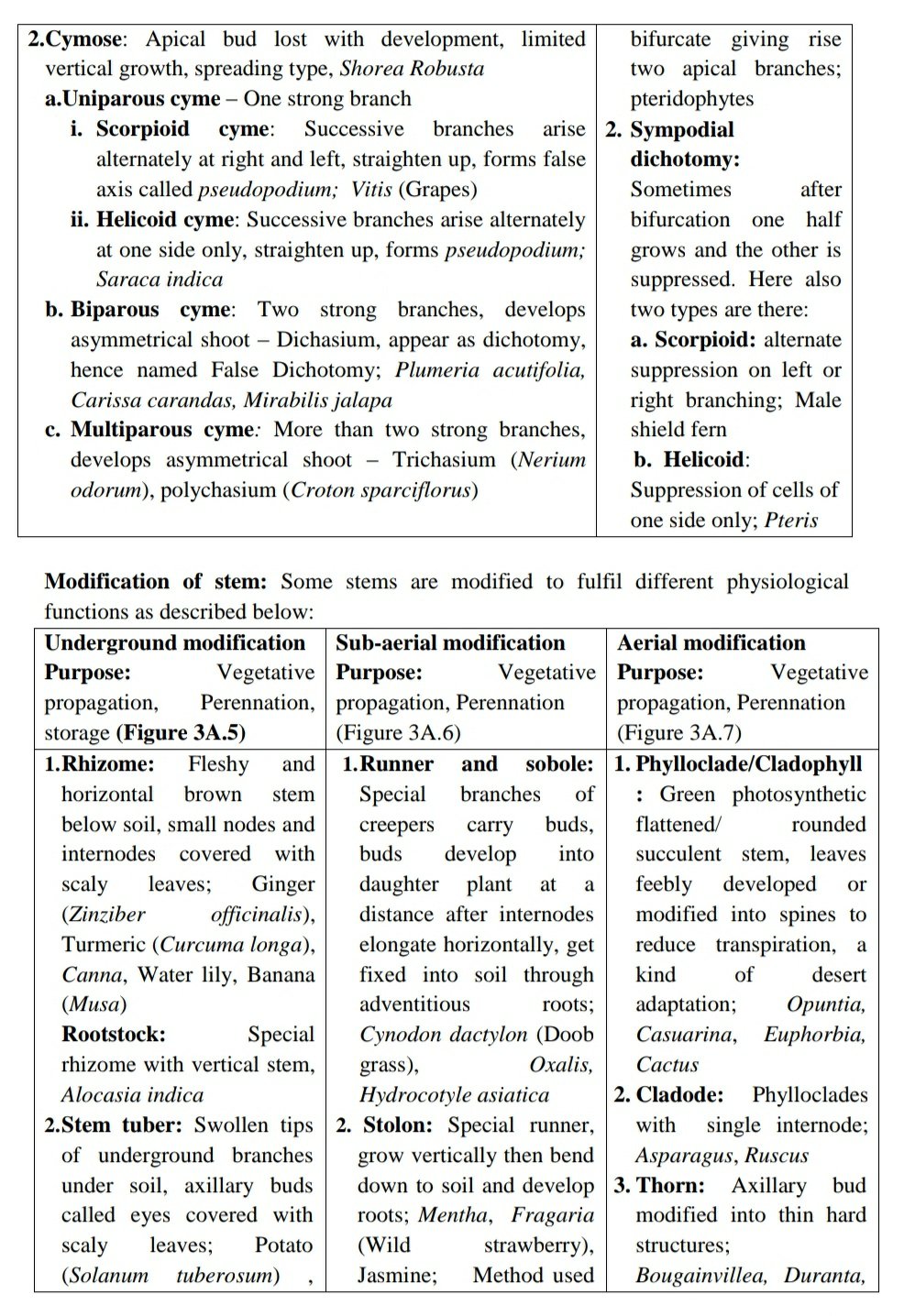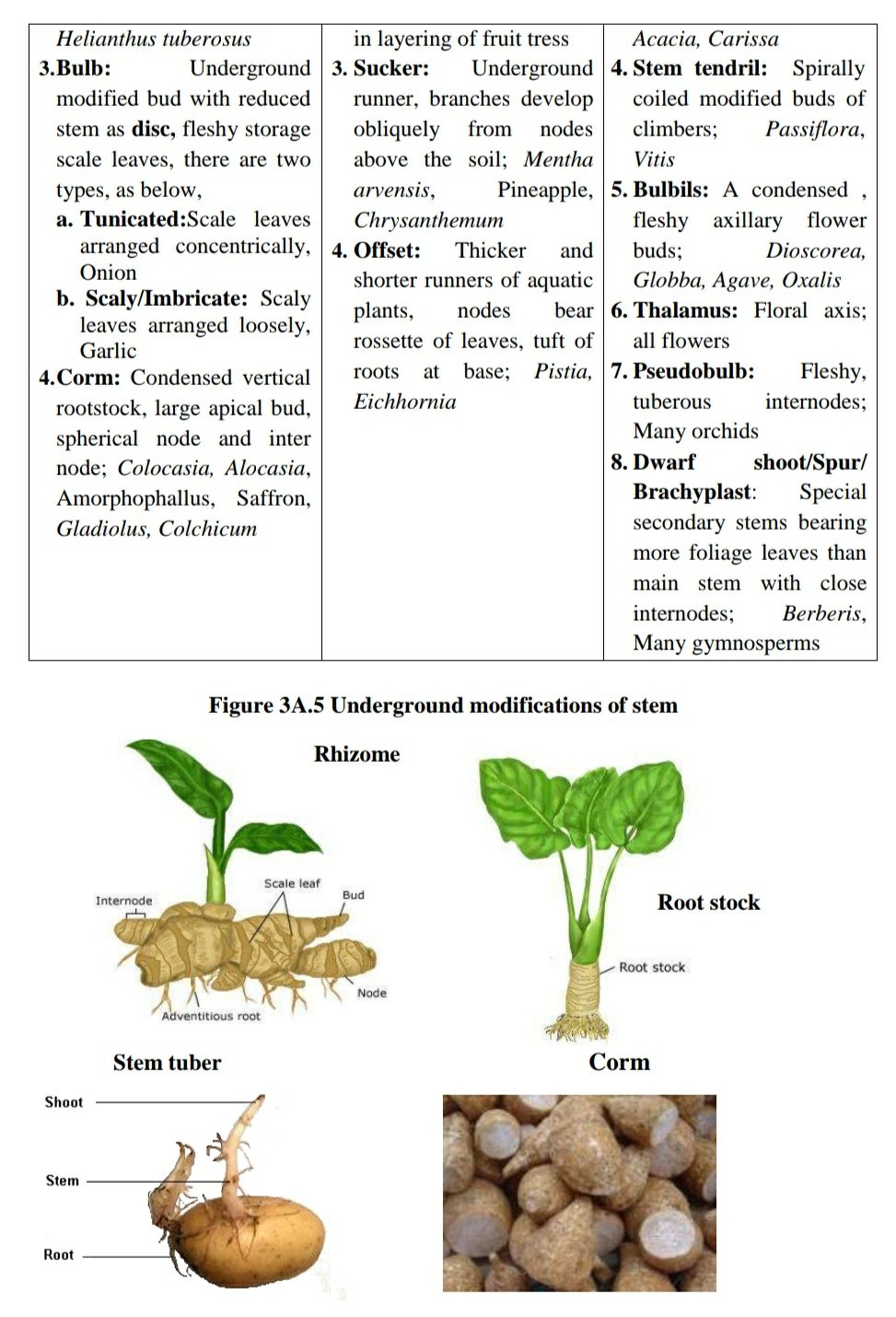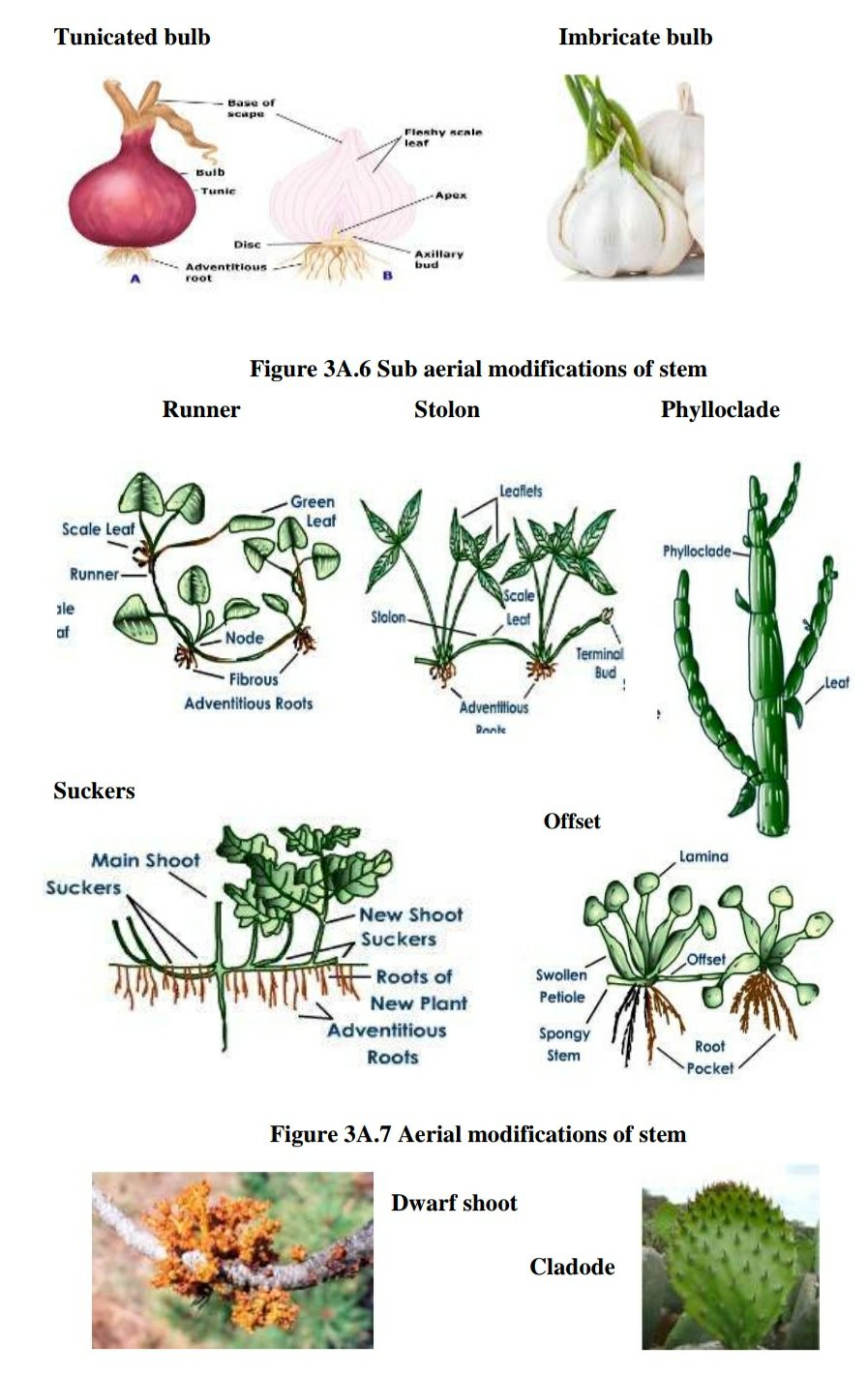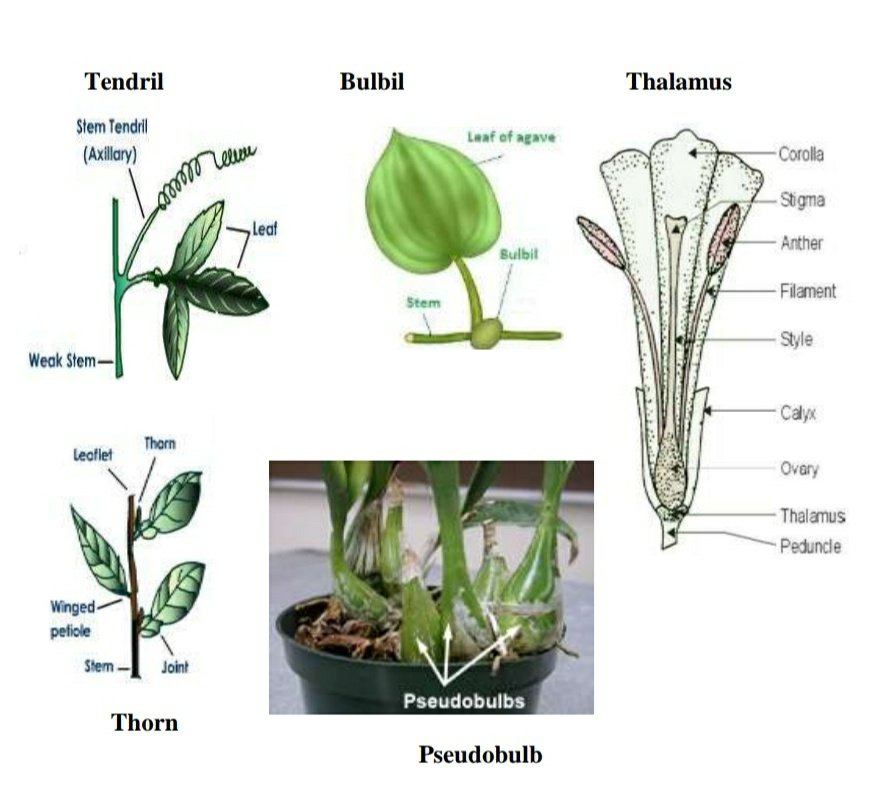Exercise: 3A
Study of Stem and Their Modifications
Stem: It is the axis of a plant bearing leaves with buds in their axils. It is formed from the elongation of plumule of the seed.
It is negatively geotropic,, positively phototropic and negatively hydrotropic
It is generally green, with buds, nodes, iternodes, leaves, branches, flowers and fruits
Function:
Supports branches, leaves, flowers and fruits
Helps in conduction of water and food material through xylem and phloem
Green stems synthesize food
Store food in modified as well as normal structures
Protects vegetative parts and helps in propagation
Different types of plants according to stem structure (Figure 3A.1):
Acaulescent: A plant which is stemless or without visible stem; onion, garlic
Arborescent: A plant almost tree-like with a short main trunk; Australian grass tree
Arboreous: A tree with well-developed trunk; mango, jackfruit
Culm: A jointed stem with distinct nodes and internodes; grasses and sedges
Questions
1. Define:
i. Shoot system ii. Acaulescent iii. Arborescent iv. Arboreous v. Culm
2. Enlist different types of stem modifications with function and proper examples.
3. Write down the important functions of stem.
4. Differentiate between
a. Stem and root b. Culm and Caudex c. Strong and weak stems
d. Thorn and prickles e. Underground and aerial modification of stem
5. What are the main types of plants according to habit.
6. Draw neat and labeled diagram of angiospermic plant.

